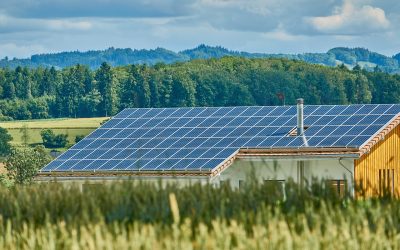Have you ever wondered how you can make a positive impact on the environment? Well, the answer may be simpler than you think. By taking small steps and making conscious choices in your daily life, you can lower your carbon footprint significantly. From using reusable bags to reducing energy consumption, there are various effective ways to minimize your impact on the planet. In this article, we will explore some of these strategies and highlight the importance of reducing our carbon footprint for a sustainable future. So, let’s get started on this journey towards a greener, cleaner world! Transportation:
Use public transportation
Using public transportation is a great way to lower your carbon footprint. Instead of driving your own car, you can take advantage of buses, trains, or trams that are often available in cities. Public transportation reduces the number of vehicles on the road, resulting in lower greenhouse gas emissions. It also promotes a more efficient use of fuel, as multiple people can travel together in the same vehicle.
Carpool
If public transportation is not a viable option for you, consider carpooling with others. Sharing rides with co-workers, friends, or neighbors who have similar commutes can greatly reduce the number of cars on the road and, therefore, lower greenhouse gas emissions. Carpooling not only reduces your carbon footprint but also allows you to split the costs of fuel and parking, making it a more economical choice.

Bike or walk
One of the most eco-friendly ways to travel is by using your own energy to bike or walk. This not only reduces your carbon footprint but also promotes a healthier lifestyle. By opting to bike or walk for short distances, you can eliminate the need for a car altogether. Not to mention, biking or walking allows you to avoid traffic congestion and parking hassles. So, tie up your laces or hop on your bike and enjoy the benefits of sustainable transportation.
Purchase a fuel-efficient vehicle
If you do need a car and cannot rely solely on public transportation or alternative modes of travel, consider purchasing a fuel-efficient vehicle. Cars with higher fuel efficiency emit fewer greenhouse gases and require less fuel to travel the same distance as less efficient vehicles. Look for hybrid or electric vehicles, as they offer even greater reductions in carbon emissions. Investing in a fuel-efficient vehicle not only benefits the environment but also saves you money in the long run through reduced fuel costs.
Energy consumption:

Use energy-efficient appliances
One of the easiest ways to lower your energy consumption is by using energy-efficient appliances. When choosing new appliances for your home, look for the Energy Star label, which indicates that the appliance meets specific energy-efficiency criteria. Energy-efficient appliances use less energy to perform the same tasks, resulting in lower greenhouse gas emissions. They may cost a bit more upfront, but the long-term savings on your energy bills make them a wise investment.
Turn off lights and electronics when not in use
A simple habit to adopt is turning off lights and electronics when they are not in use. Many of us tend to leave lights on in empty rooms or leave devices plugged in even when they are fully charged. However, these unnecessary energy drains contribute to higher energy consumption and increased carbon emissions. Get into the habit of switching off lights when leaving a room and unplugging chargers and power strips when not in use. These small actions can make a significant impact on reducing your carbon footprint.

Unplug chargers and power strips
Many electronics and appliances continue to draw power even when they are turned off but still plugged in. This phenomenon is commonly known as standby power or vampire power. To prevent standby power consumption, unplug chargers, power strips, and other electronic devices when they are not in use. By doing so, you can cut down on wasted energy and reduce your carbon footprint. Consider using smart power strips that automatically turn off power to devices that are not in use to make the process even more convenient.
Install solar panels
Harnessing the power of the sun is an excellent way to reduce your carbon footprint and decrease your dependence on fossil fuels. Installing solar panels on your roof or property allows you to generate clean, renewable energy. Solar panels convert sunlight into electricity, which can power your home and appliances. By utilizing solar power, you can significantly reduce your reliance on the grid and lower your carbon emissions. Additionally, many governments and organizations offer incentives and tax credits for installing solar panels, making it a financially viable option for many homeowners.
Water conservation:
Fix leaks and drips
Water is a precious resource, and fixing leaks and drips in your home is essential to conserving it. A leaky faucet or a running toilet can waste a significant amount of water over time. Make it a habit to regularly check your plumbing fixtures and repair any leaks or drips promptly. Not only will this conserve water, but it will also lower your water bill. Remember, even a small leak can waste gallons of water each day.
Take shorter showers
Reducing your shower time is an effective way to conserve water. Long showers can use a substantial amount of water, especially if you have a high-flow showerhead. Aim to take shorter showers and turn off the water while lathering or shampooing to save even more water. Consider installing a low-flow showerhead, which restricts water flow while still providing a satisfying shower experience. By being mindful of your shower habits, you can significantly reduce your water usage.
Install water-saving fixtures
Upgrading to water-saving fixtures is another way to conserve water in your home. Replace old toilets with low-flow models that use less water with each flush. Install aerators on faucets, which add air to the water stream, reducing the overall water flow without compromising performance. Switching to water-saving fixtures not only reduces your water consumption but also decreases the strain on freshwater supplies and wastewater treatment facilities.
Collect rainwater for irrigation
Rather than relying solely on potable water for watering your garden or plants, consider collecting rainwater. Rain barrels or other rainwater harvesting systems can be used to capture rainwater from your roof. This collected water can then be used for tasks like watering plants, cleaning outdoor areas, or even flushing toilets. By utilizing rainwater, you can reduce your reliance on municipal water supplies and preserve this valuable natural resource.
Reduce, reuse, recycle:
Buy products with minimal packaging
One way to reduce waste is by opting for products with minimal packaging. Excessive packaging generates more waste and requires additional resources to produce. When shopping, choose products that are minimally packaged or have packaging made from recyclable materials. By doing so, you can cut down on the amount of waste that ends up in landfills and contribute to a more sustainable future.
Repair and repurpose items
Instead of throwing away broken or worn-out items, consider repairing or repurposing them. Repairing appliances, clothing, or furniture not only saves money but also reduces the demand for new products. If an item cannot be repaired, think about how it can be repurposed or transformed into something else. For example, an old ladder can be turned into a bookshelf, or glass jars can be used for storage. By finding alternative uses for items, you can minimize waste and prolong their lifespan.
Recycle household waste
Recycling is a fundamental step in reducing waste and conserving resources. Most communities offer recycling programs that accept a wide range of materials, including paper, cardboard, glass, plastic, and metal. Get into the habit of sorting recyclables from your regular trash and placing them in designated recycling bins. Make sure to follow your local recycling guidelines to ensure that materials are properly prepared for recycling. By recycling, you can help reduce the strain on natural resources and lessen the environmental impact of waste disposal.
Compost organic matter
Composting is an eco-friendly way to manage organic waste and create nutrient-rich soil. Rather than throwing food scraps, yard trimmings, and other organic matter into the trash, start a compost pile or use a compost bin. Composting allows these materials to break down naturally over time, resulting in a nutrient-rich compost that can be used in gardens or as a soil amendment. By composting, you divert organic waste from landfills, reduce greenhouse gas emissions from decomposition, and promote healthy soil ecosystems.










